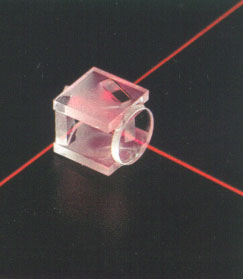   What is Laser What is Laser
 The way Laser Works The way Laser Works
 Different Types of Laser Different Types of Laser
 Feedback Feedback
 Applications of Laser Applications of Laser
 Hazards with Laser Hazards with Laser
 Resources & Different Web Sites Resources & Different Web Sites
 Test Yourself Test Yourself
|
|---|
 POWER OF LASER
POWER OF LASER

The power range of laser: A glance at the table 1 shows that some lasers generate kilowatts of continuous wave power and that some others are capable of producing megawatts, gigawatts and even terawatts of pulsed peak power.
| LASER MEDIUM |
PEAK POWER(~) |
WAVELENGTH | Uses |
Gas | |||
HENE |
1 mW | 633 nm | Supermarket Scanners |
Argon |
10 W | 488 nm | Entertainment, Medical |
CO2 |
200 W | 10.6 mm | Cutting and Welding |
CO2 |
5 mW | 10.6 mm | Heat treating |
Semiconductor | |||
GaAs |
5 mW | 840 nm | CD players |
AlGaAs |
50 mW | 760 nm | Laser printers |
GaInAsP |
20 mW | 1.3 mm | Fibre communications |
Solid State | |||
Ruby |
100 MW | 694nm | Live holography |
Nd:YAG |
50 W | 1.06 mm | Semiconductor processing |
Nd:YAG (QS) |
50 MW | 1.06 mm | Medical applications |
ND:YAG(ML) |
2 kW | 1.06 mm | Short-pulse studies |
Nd:Glass |
100 TW | 1.06 mm | Laser fusion |
Dye | |||
Ring dye |
100 mW | Tunable | Spectroscopy |
Rh6G(ML) |
10 kW | 600 nm | Scientific studies |
Chemical | |||
HF |
50 MW | 3 mm | Weapons |
Excimer | |||
AlF |
10 MW | 193 nm | Materials processing |
XeCl |
50 kW | 375 nm | Medical applications |
Table I : Different types of Lasers & their Uses
|
 
 Applications of Laser Applications of Laser
 Hazards with Laser Hazards with Laser
 Resources & Different Web Sites Resources & Different Web Sites
 Test Yourself Test Yourself
|
|---|
